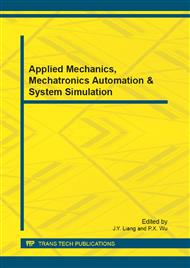p.751
p.756
p.761
p.766
p.772
p.777
p.781
p.786
p.790
Modeling and Analysis of the Exponential Unit with General Repair
Abstract:
As to the fact that the common model of repair does not suit for the immemorial exponential unit, it first proposes the general repair model based on the Repair Degree. This model can describe the repair effect of the exponential unit exactly. Then it studies the classical estimation method of the parameters for the Repair Degree as well as the Failure Rate in the condition of general repair, that’s Moment Estimation and Maximum Likelihood Estimation. On this foundation, it compares the two methods by large amount of simulative data. Further, it figures out the estimation value of the Failure Rate on the assumption of ‘As Good As new after repair’. There exists apparent difference from the exact value. So it shows that the assumption of ‘As Good As new after repair’ is not appropriate.
Info:
Periodical:
Pages:
772-776
Citation:
Online since:
September 2012
Authors:
Price:
Сopyright:
© 2012 Trans Tech Publications Ltd. All Rights Reserved
Share:
Citation:


